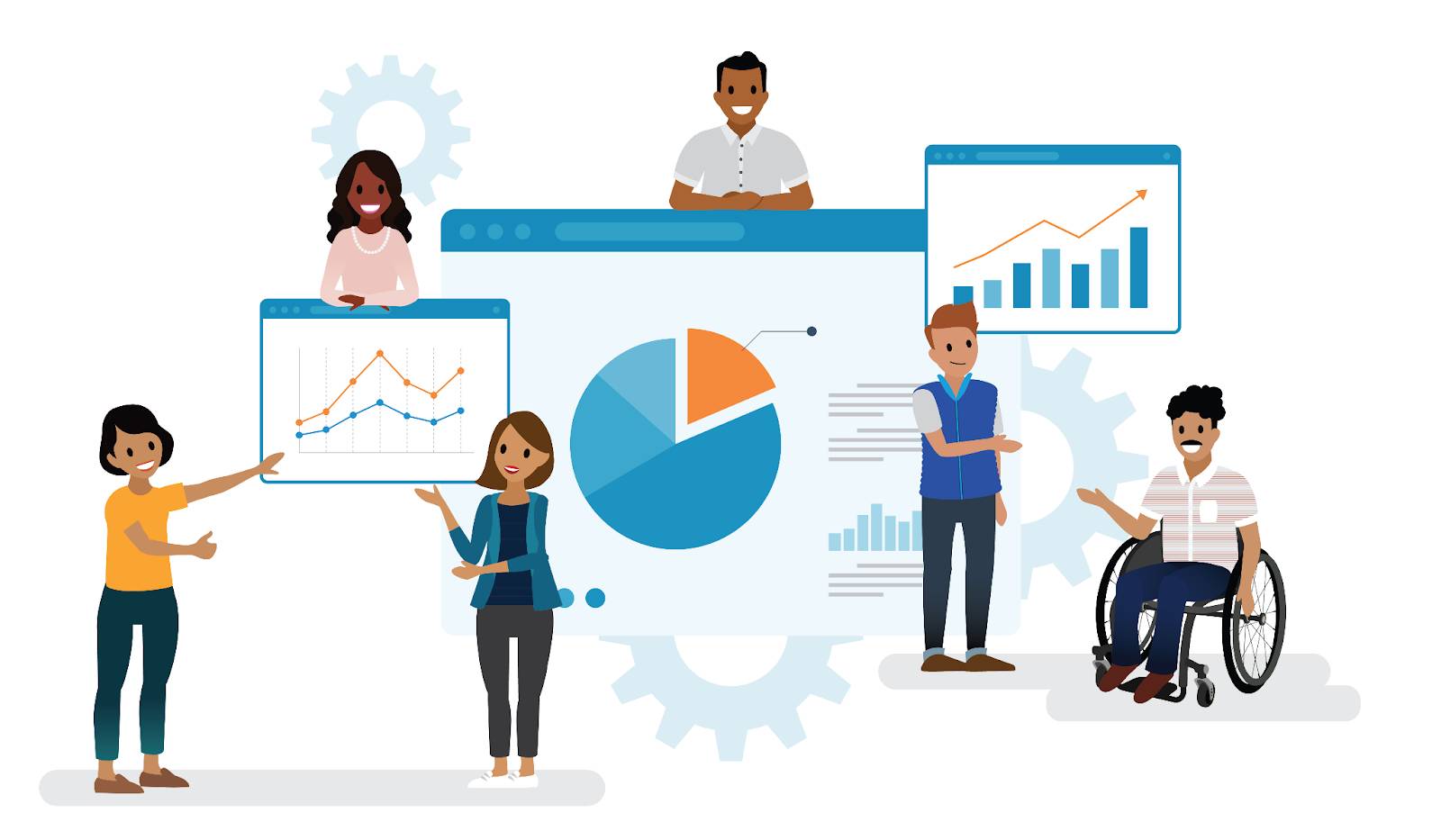Drive Greater Equality with Salesforce Products
Learning Objectives
After completing this unit, you’ll be able to:
- Explain how companies can use Salesforce to create greater equality through data.
- Identify how Salesforce uses its own products and technology to drive its core value of Equality.
Drive Equality Through Data
You probably already know that Salesforce helps you manage relationships with customers and prospects, collaborate and engage with employees and partners, and store your company data securely in the cloud.
But you may be surprised to find that Salesforce also allows you to:
- Gather insights on your diversity, equity, and inclusion data.
- Connect that data to the metrics that matter most to you.
- Use that information to speak to how your company is aligning with its core values.
These capabilities provide you with an understanding of where your company stands today on your diversity, equity, and inclusion goals, and what actions you must take to progress.

Understanding your company’s data is the first step in a long journey toward creating greater accountability, representation, access, and, ultimately, a more diverse and inclusive workplace and world.
“While there is no finish line when it comes to equality, every company can make progress in creating a more diverse and inclusive workforce and ecosystem by seeing and acting on their data.” —Marc Benioff, Chair and CEO, Salesforce
But despite all the benefits of leveraging data, recent research shows that many companies are not using data to inform their diversity and inclusion decisions. This can be a big obstacle to real progress. So how can you take advantage of Salesforce to reach your goals? To start, let’s look at how we at Salesforce use our very own products and technology to drive one of our core values: Equality.
Put Our Smart Strategy into Practice
Using our own products and technology at Salesforce has helped us develop a strategy to uncover equality gaps, increase representation, improve the employee experience, and create the most inclusive workplace. We track our progress and measure whether our strategy is working through quantitative insights our technology provides. For example:
- We use Tableau, our data visualization tool, to track and share our representation data annually on Equality.com. Tableau is also our tool of choice for our internal Equality Dashboard and Scorecards, giving company leaders visibility into anonymized and aggregated representation data and progress toward our public goals. This helps us build accountability into our process.
- Our chief equality officer uses Marketing Cloud to communicate with company leaders and deliver high-priority messages on our Equality strategy and recommended actions.
- We use Trailhead to help the Salesforce ecosystem understand how to champion Equality within their own organizations through Equality trails (just like this one!).
- We use Slack, our internal communications platform, to engage employees on our #Equality channel and channels for each of our 13 Equality Groups, our employee-led resource groups. Slack allows us to curate and highlight the priorities, programs, initiatives, and events that are driving our strategy forward.
- We use Equality Network, modeled after our Sales Cloud product, to manage and prioritize processes and data for Equality Groups.
- And we’re in the beginning stages of moving our equality data to the Net Zero Cloud.
When considering your own data and equality goals, it’s important to remember that the technology you use is only as good as the data that goes into it and that progress on your goals takes time. Regularly gathering and analyzing anonymized and aggregated data helps reveal what equality gaps exist in your company and informs how you approach closing those gaps.
At Salesforce, we implemented two practices to gather and analyze our anonymized and aggregated data.
- We track voluntary self ID data on race and gender to better understand how we’re building diverse teams and how we can build inclusive strategies to support more employees from all backgrounds.
- Our people analytics team developed dashboards using Tableau that focus on representation data, which is refreshed on a monthly basis. These dashboards help leaders understand where their teams might not be reflecting the representation goals we’ve set, leverage tools to build inclusion across their teams, and embed inclusive practices in their everyday work that fosters a culture of belonging.
Our data tells a story of the underlying causes for any representation and inclusion gaps. Clear and accurate data ensures that the leaders who can help drive change across the organization are equipped to do so. In the next unit, you learn about the relationship between our Salesforce core values of Equality and Customer Success, so keep reading.